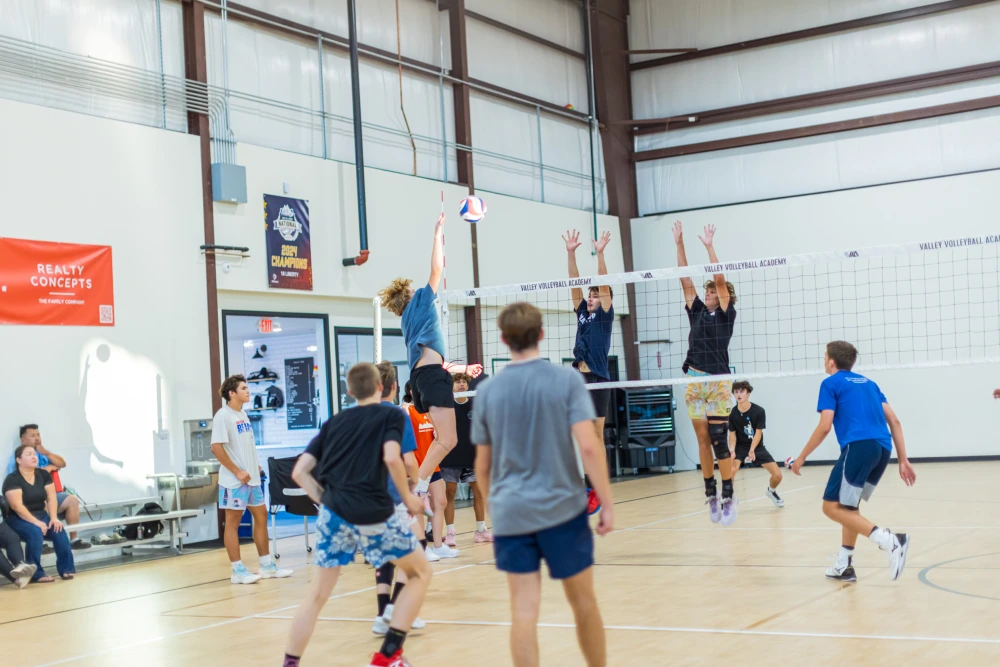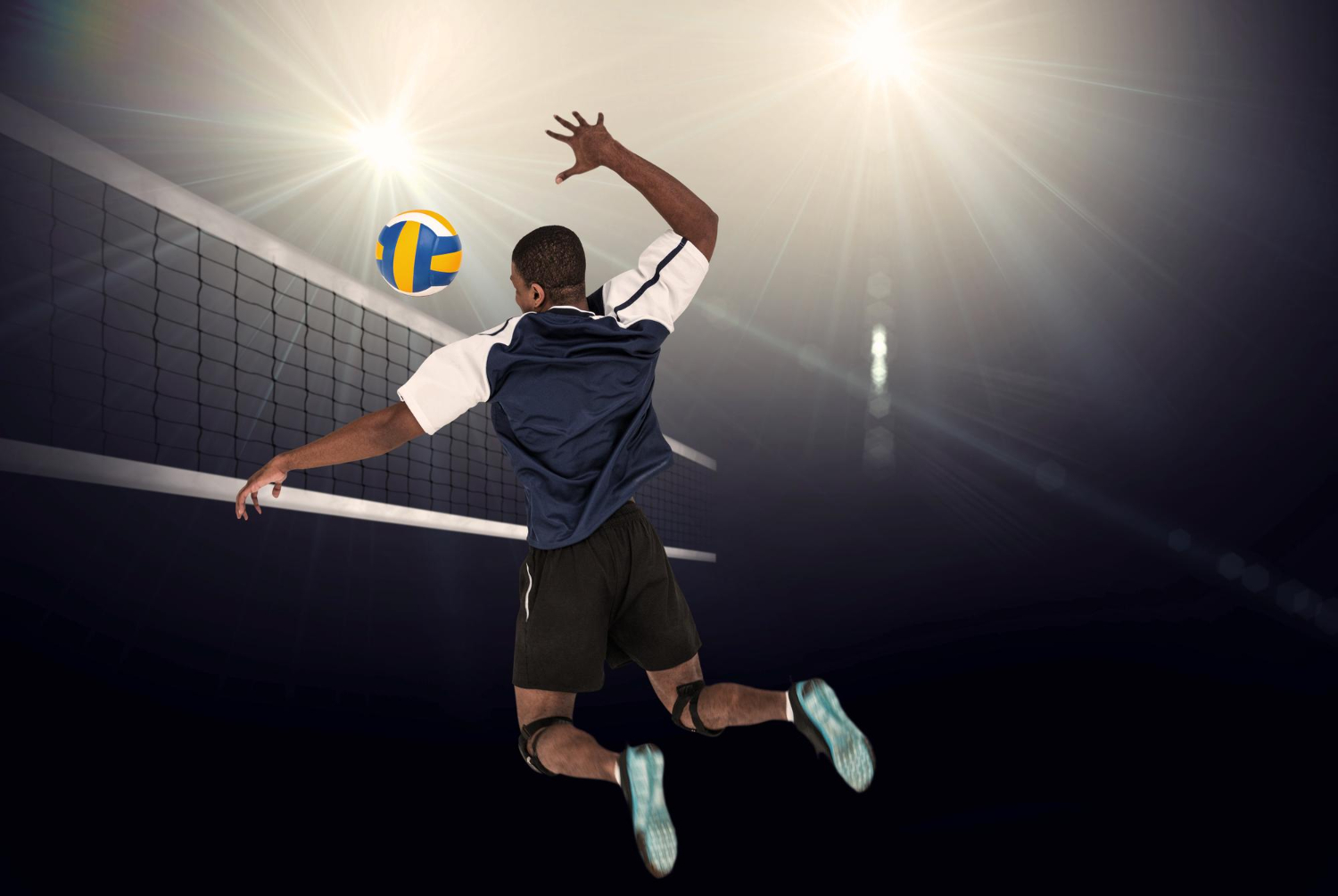Table of Contents
ToggleIf you’re just starting out with volleyball, all the Volleyball Rotation and numbers can feel a bit overwhelming. But don’t worry, the 4-2 rotation is one of the easiest systems to understand. It’s simple, beginner-friendly, and helps keep things organized on the court. Whether you’re a new player, a coach working with young teams, or just someone trying to learn the basics, understanding the 4-2 rotation can really help you feel more confident during the game. Let’s take a closer look at what it is, and how it works.
What is 4-2 Volleyball Rotation?
The 4-2 volleyball rotation is one of the easiest systems to understand, especially if you’re just getting started with the game. It focuses on keeping things simple by avoiding the complications that come with hybrid players or setters coming from the back row. In this setup, there are four attackers and two dedicated setters. The setters usually stand opposite each other in zones 1 and 4, which helps keep the rotation smooth. Middle blockers are placed in zones 3 and 6, while the outside hitters are in zones 2 and 5, right behind the setters in the rotation.
The idea behind this system is straightforward. The setter who is in the front row always takes charge of setting the ball. The one in the back row plays more like a defender during that time. Once the back-row setter rotates to the front row, she takes over the setting role for the next three rotations, while the other setter moves to the back and shifts focus to defense.
This rotation may seem basic, but it works well in many situations, especially for beginner and intermediate teams. Let’s take a look at its advantages below.
Advantages of the 4-2 Rotation in Volleyball
Here are some of the main advantages of 4-2 rotation in volleyball:
-
Simplified Offense
With only one setter active in the front row at a time, players always know who will be setting the ball. This removes a lot of confusion, especially during fast plays. The team gets used to a clear structure, which helps everyone focus better on their roles.
-
Faster Offense
Because the front-row setter is already close to the net, sets can be delivered quicker. This helps your attackers get the ball faster and strike before the opposing blockers are fully ready. It keeps your offense sharp and aggressive.
-
Versatile Offensive Options
Even though it’s a simpler system, the 4-2 still gives you room to try different attacking strategies. With three front-row attackers available, you can go for middle hits, outside spikes, or even surprise the other team with a quick tip.
-
Improved Backcourt Defense
Since the back-row setter isn’t responsible for setting, she can focus fully on defense. This means better digs, stronger coverage, and overall better backcourt control. Your team can respond faster to attacks and keep the rally going.
-
Simplified Service Reception
The 4-2 rotation also helps with receiving serves. The front-row setter doesn’t usually take part in serve receive, which means the backcourt players can spread out and cover more space. It leads to better communication and fewer overlaps.
-
Easier to Learn
For younger players or teams still building their rhythm, this system is easier to understand and practice. There’s no need to worry about setting from the back row or switching positions after every serve. Everyone knows their role, and that builds confidence.
-
Setter as an Offensive Weapon
Having the setter in the front row opens up some extra opportunities. They can dump the ball over the net, fake a set, or block at the net. This gives your team another layer of attack that the opposing team might not expect.
Disadvantages of the 4-2 Rotation in Volleyball
While the 4-2 roation offers a fair set of advantages, it does have a few drawbacks as well. Here’s a closer look:
-
It Reduces Setting Consistency
One of the main problems with the 4-2 rotation is that it affects how consistent the setting is. Since two setters are constantly rotating, neither of them gets enough time to build rhythm or improve through repetition. This affects not just the setters but the hitters too.
Now you might be wondering, how does this impact the hitters?
Every setter has their own way of setting the ball. Some are quicker, some slower. Some prefer short sets, others like a high arc. When the setters keep switching, hitters don’t get the chance to get used to one style. This makes it harder for them to time their runs, and overall, it affects the flow of the team.
For example, imagine one setter likes fast and short sets. If the hitters aren’t used to it, they’ll likely be late. Then when the second setter comes in and sets the ball high and loopy, the hitters might end up jumping too early and landing under the ball. This constant change throws off the rhythm, and that rhythm is especially important at the beginning of the match. A team that can’t find its tempo early often struggles to perform well.
-
It Makes the Offense Very Predictable
Another big issue is how predictable this rotation becomes. Since the setter is always in the front row and there are only two front court hitters at a time, it becomes easier for the opposing team to read and block attacks. If the other team catches on quickly, they can start shutting down your offense with well-placed blocks.
To avoid being too easy to read, one option is to start involving the back row in attacks. Back row hitters offer different angles and force the other team to spread out their blockers, which gives your front court attackers more space to work with. It’s not a perfect fix, but it does help break the pattern.
-
You Never Have Three Front Court Attackers
One of the biggest disadvantages of the 4-2 rotation is that you lose the chance to have three attackers in the front row. In other formations, there are moments when all three front court players are available to hit, making the offense harder to predict and defend against. But with this rotation, the setter is always in the front row, so you lose that extra attacking option.
This limits your offense and can make your team less aggressive at the net. The only real workaround is to make the most of tight passes or overpasses. When the ball comes close to the net, the front row setter can try to surprise the defense with a quick attack on the second contact or send the ball over with a dump. These little tricks can help, but they still don’t fully replace the power of having three strong hitters up front.
How the 4-2 Volleyball Rotation Works?
If you’re new to volleyball strategy, the 4-2 rotation is one of the easiest systems to start with. It’s simple to learn, simple to run, and helps build a solid foundation for both setters and hitters. Here’s a closer look at how it works:
-
All Sets Come from the Right of Center
In the 4-2, the setter should always operate from just right of center on the court. This position keeps things organized and predictable, which is a good thing when you’re still getting the hang of rotations. Since the setter is always in the front row, they’re ready to deliver quick sets without too much movement.
This position also gives the two front-row attackers space to run different plays. For example, the middle hitter can move toward the left side to confuse the blockers on the other team. It adds a bit of unpredictability to your offense, even if the setup is basic.
Some setters also use this chance to tip or dump the ball over the net on the second contact. While it’s not a powerful hit, it’s enough to keep the defense guessing.
-
Be Ready to Set the Back Row
One of the common challenges in the 4-2 is that there are only two attackers up front. So the back-row attack becomes important. If your front-row hitters are out of position or tightly blocked, using a back-row hitter can be a good backup plan. Even if it’s just to keep the play alive, having the option helps.
Encouraging a back-row attack also adds variety to your offense, which is useful when the other team starts reading your front-row plays.
-
Front-Row Players Can Help in Passing
When working with a brand-new team, especially one still learning how to pass well, the two front-row players can step back and help with serve receive. This gives you five passers plus a setter at the net. It’s especially helpful against teams that don’t spike hard, because you don’t need blockers as much in those matches.
But keep in mind, this strategy works only if the opposing team isn’t attacking with much pace. If they are, your front row should stay ready to block.
Let’s move on further and understand the rotations.
-
Rotation One
In the first rotation, the active setter is in the front right spot. That’s their preferred position for setting, and it sets the tone for a smooth offense. The middle hitter follows the outside hitter, meaning the middle starts in the front left, and the outside starts in the front middle. The idea here is to let the setter stay close to their ideal spot with very little movement.
Meanwhile, the inactive setter is in the back left. In this system, each back-row player lines up opposite their front-row counterpart. This helps maintain balance and allows for smoother transitions.
-
Rotation Two
Now, the back-row setter comes up to the front, and the previous setter drops back. To get the new setter into position quickly, the outside and middle hitters shift all the way to the right during serve receive.
This might limit attacking options on the first hit, but it keeps the setter close to the front right corner. That’s the goal. The outside hitter has to travel the most, but that’s okay. They’re usually the most athletic and can handle that extra movement.
Once the rally starts, the outside hitter slides over to their hitting position on the left. This setup gives them a better shot at attacking on the first pass.
-
Rotation Three
In this one, a fresh hitter comes into the front row and lands in their ideal front-left position. The middle hitter lines up slightly to the right of center, which allows them to shift left after the serve. The setter stays right where they are, which is exactly what you want in this rotation. It’s a clean setup that puts everyone in a good spot without too much shifting.
-
Rotations Four, Five, and Six
These next three rotations are just like the first three, but now the players switch with their opposite counterparts. The pattern repeats, which is what makes the 4-2 so beginner-friendly. There are no complicated switches or surprises. It’s steady, predictable, and helps players focus more on the game itself than on where they need to go.
New to rotations? Check out other volleyball rotation strategies.
Simple Strategies to Make the 4-2 Work Better
Here’s a closer look at some strategies that will help you to make the 4-2 rotation work better:
-
Designated Back-Row Attackers
Train a couple of players to hit from the back row. This adds another layer to your offense when the setter is in the back or when your front row is under pressure.
-
Setter Runs
Encourage the back-row setter to move up to the 10-foot line and set from there when needed. It helps maintain the tempo and keeps the offense flowing.
-
Smart Blocking Plans
Work on blocking as a team and prepare for mismatches that might come up in different rotations. Positioning and timing matter here.
-
Strong Serve Receive
A clean serve receive is important. It allows the setter to stay in their ideal position and run the offense with more control.
-
Clear Communication
Make sure players talk to each other throughout the match. Good communication before, during, and after each point helps prevent mix-ups and keeps the team on the same page.
Common 4-2 Rotational Mistakes to Avoid
If you’re running a 4-2 rotation in volleyball, it’s important to understand the system well to avoid common mistakes. Even though the 4-2 is one of the simpler offensive systems, there are still areas where teams often slip up. Let’s go over a few mistakes you should watch out for.
-
Not Adjusting to Serve-Receive Formations
Many teams stick to a fixed rotation pattern without adjusting for serve-receive situations. This can make passing more difficult and leave the team unbalanced on the court. In a 4-2 system, you should always tweak your formation based on who’s serving and who’s receiving. Position your strongest passers in the right spots and make sure the setter can move into position easily after the serve.
-
Failing to Recognize Setter Transitions
In a 4-2, the front-row setter is the one running the offense. But if players don’t recognize when the setter has rotated into the front row, confusion kicks in. You might end up with the wrong person setting or players hesitating because they’re not sure who’s in charge. Always be clear about who the current setter is and practice transitions so the team moves smoothly from defense to offense.
-
Improper Overlaps and Illegal Rotations
This is one of the most common technical errors in a 4-2 setup. If players don’t line up correctly during rotation or overlap the wrong way, referees can call an illegal rotation. It’s important to keep track of your position relative to your teammates. Make sure you’re rotating clockwise and staying within your legal zones to avoid unnecessary penalties.
-
Mixing Up Front-Row vs Back-Row Roles
The 4-2 depends on having three front-row attackers available at all times. If players don’t know whether they’re in the front or back row, it messes up your attacking options and could even lead to illegal hits. Train your team to identify their row position right after rotation and understand their responsibilities in that spot. This helps keep the offense smooth and avoids errors like back-row attacks.
Closing Thoughts
The 4-2 rotation might be simple, but it offers a solid structure for teams that are still learning the game. It gives players clear roles and helps them focus on building rhythm. Like any system, it has a few limits, but with the right practice, it can still help your team play with confidence and control.
Curious about volleyball rotation strategies? Learn them and more by joining our Volleyball Programs today!
FAQs
Q: What is the main goal of the 4-2 rotation?
The main aim is to always have three front-row attackers available in each rotation. This helps put consistent pressure on the opposing team by keeping your offense strong.
Q: Is the 4-2 system good for high school teams?
Yes, it works well for beginner and intermediate-level high school teams. It keeps roles simple and helps players focus on core skills. More advanced teams might benefit from moving to a 5-1 or 6-2 system later on.
Q: Can the back-row setter set the ball?
Technically, yes. But in a true 4-2 system, only the front-row setter is supposed to set. This keeps things clear and avoids confusion during play.
Q: How do you avoid illegal rotations in 4-2?
Make sure players always rotate in a clockwise direction and maintain the correct overlaps. Practicing rotations regularly helps everyone stay in legal positions during games.
Q: How many front-row hitters are available in the 4-2?
You’ll always have three front-row attackers when using a 4-2 rotation, as the setter is placed in the front row. This gives your team strong attacking options at all times.
Authors
-
Sarah Baker is a dedicated sports and fitness content specialist with a rich background in athletics. As a former high school volleyball player and track athlete, she understands the transformative power of sports in shaping character and fostering discipline. Sarah is passionate about inspiring youth worldwide to embrace sports, hone their skills, and achieve excellence both on and off the court. She continually expands her knowledge through ongoing education in sports performance and fitness, aiming to empower her audience with valuable insights. Currently, Sarah contributes her expertise to the content team at Valley Athletics, a premier sports facility in Fresno, California, dedicated to developing young athletes in volleyball, basketball, and pickleball.
View all posts -

Jonathan stands as a monumental figure in volleyball, boasting accolades such as National Champion, National Player of the Year, and being one of the select few, just thirteen, to achieve All-American status four times in NCAA volleyball history. His illustrious playing journey took flight at Pepperdine University, culminating in his 2005 NCAA Championship win, AVCA National Player of the Year and Newcomer of the Year titles.
View all posts



